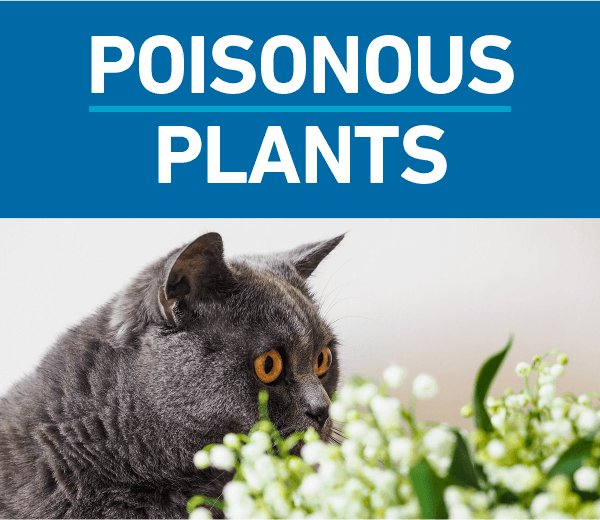Deadly Plants for Pets
Published February 19, 2019


In the southeast, we are blessed with incredible weather. It makes it easy even for someone without a green thumb to grow beautiful gardens. However, there are some plants that can be very dangerous to your pets, even deadly.
There are hundreds of plants that may be poisonous and even non-poisonous plants can cause mild stomach upset, if ingested in large quantities. Make sure to check all floral arrangements and garden flowers to make sure they are not dangerous for your pets. The following are some of the most deadly plants that you should make sure to keep away from your pets:
Lilies
Easter lilies (Lilium longiflorum), tiger lilies (Lilium tigrinum), rubrum or Japanese showy lilies (Lilium speciosum and Lilium lancifolium), and various day lilies (Hemerocallis species) are extremely dangerous to cats. These beautiful and colorful plants are not only grown as ornamental plants in the yard but are also commonly found in bouquets and flower arrangements. While the exact toxic component is unknown, cats appear to be the only species sensitive to its deadly effects. A cat licking or chewing on the plant may develop potentially fatal kidney failure. Even small ingestions, such as a few bites on a leaf or ingestion of pollen, can be deadly.
Rhododendron (Rhododendron spp.)
Rhododendron species contain a toxic substance known as Grayanotoxin. Grayanotoxins can be very dangerous if pets ingest plants containing them. This type of poison causes stomach upset and can also affect heart rate and the nervous system. As few as two leaves may cause serious poisonings. A common plant found in this family is the Azalea, which is often used as an ornamental plant.
Cardiac Glycoside-Containing Plants
These types of plants contain a poison known as cardiac glycosides. The most commonly recognized is digitalis, which is sometimes used in medication to treat cardiovascular disease in people and pets. Plants that contain this type of poison are highly toxic because they can cause life threatening effects on the heart. Examples of these types of plants include oleander (Nerium oleander), lily-of-the-valley (Convallaria majalis), foxglove (Digitalis purpurea), certain milkweeds (Aesclepias spp.), and squill (Virginea maritime.) All parts of cardiac glycoside containing plants are toxic, and even small amounts can be deadly.
Castor Beans (Ricinus communis)
The castor bean plant is used as a decorative plant, in jewelry, and sometimes the oil (castor oil) from the plant is used medicinally. The toxic principle in this plant is ricin, which is one of the most potent toxins known. The castor bean seeds are most commonly associated with poisoning, as they contain the highest concentration of ricin in the plant. The beans must be crushed to release the toxin, but even small amounts of ricin can be fatal.
Cycad Palms (Cycas, Zamia)
These ornamental plants are naturally found in sandy soil areas, like Texas, Florida, and California. They are commonly known as Sago or Fern palms. This plant is also becoming a popular bonsai-style houseplant. Cycasin is its toxic component. Cycasin is found throughout the plant, although it is more concentrated in the seeds. This toxin can cause severe liver failure if ingested. Ingestion of one or more seeds has resulted in severe symptoms and even death in pets.
Yews, Taxus species
Many types of yew bushes grow naturally and are used in landscaping. The toxic ingredient in these bushes is Taxine. Most cases of poisoning from yew bushes typically result from feeding the trimmings to grazing animals, however a curious cat or dog may chew on the bush. In cattle, horses, and goats, the toxic ingredient results in heart failure and sudden death. In dogs, and possibly in cats, the animal usually experiences seizures following its ingestion.



